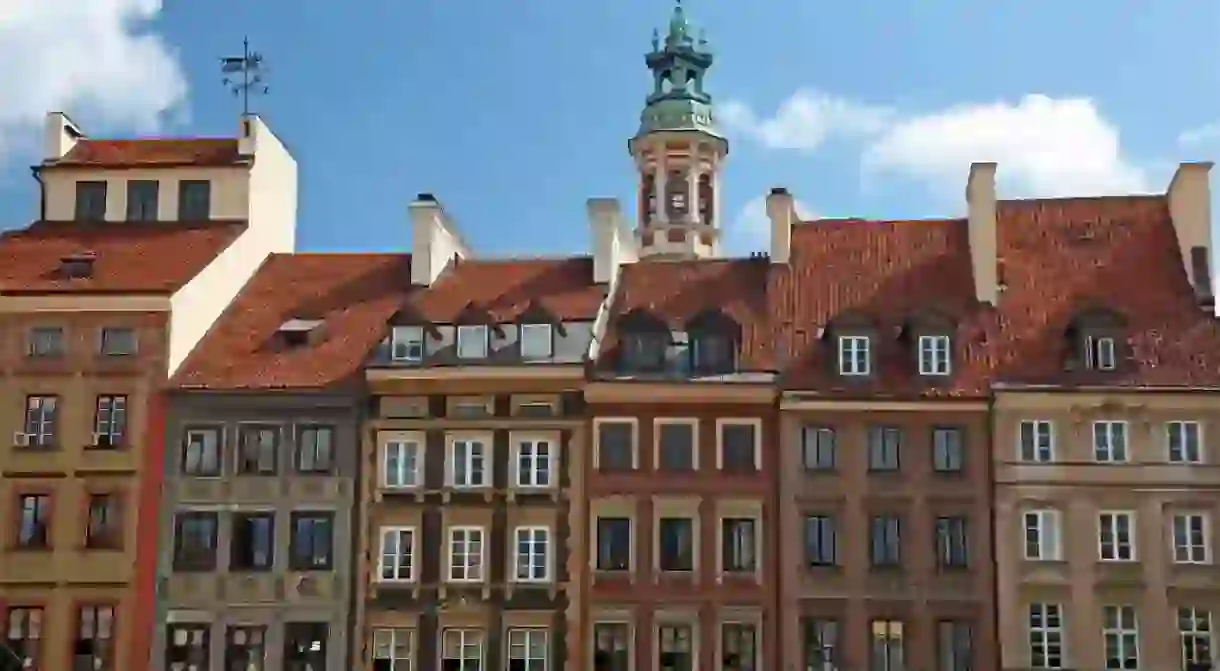How Old is Warsaw's Old Town Actually?

Often provided as an example of successful restoration scheme of impressive scale, Warsaw’s Old Town is, in fact, a work of re-imagination, rather than reconstruction. Inspired by 18th-century cityscapes, the Old Town in its current form is a version of the city that never really existed, making it an intriguing case study of using architecture as a propaganda tool.
After World War II, more than 85% of the city was destroyed and covered with a thick layer of rubble. Unlike other European cities, which were damaged during the fighting, Warsaw’s erasure was part of a systematic scheme and an act of revenge by Hitler and his forces. Much of the historic tissue of the city with its Art Nouveau façades was never rebuilt, being instead replaced by monumental Social Realist architecture that became the country’s obligatory style in 1949.

However, in order to lift the nation’s spirit, post-war authorities decided to not only to rebuild the Old Town and the Royal Route, but actually restore it. Builders used the same stones and made special bricks to preserve the authenticity of the place, yet soon after the new Old Town was opened, people started noticing small differences.
Despite the strive for authenticity and meticulous attention to detail during construction, some of the ornaments decorating the facades were completely altered. Similarly, buildings along the Nowy Świat Street were all two stories high, even though before the war those very same houses had various heights. It would be easy to dismiss those changes as choices made out of lack of resources and time, given the vastness of construction needs in the city in that period, however the actual history behind them is much more complex.
What served as the canvas for the reconstruction builders were 18th-century paintings of the Venetian painter Bernardo Bellotto (1722-1780), also known as Canaletto, who was the court painter to the last King of Poland, Stanisław August Poniatowski. As a “vedutista,” Canaletto was trained in the Venetian school of painting, characterized by depicting scenes and details realistically and accurately, yet he was also known for sometimes altering and making “improvements” to better the reality and gain approval in the eyes of his benefactor, the King.
The history of the 22 cityscapes that Canaletto painted for the King, which were then used to recreate the Old Town, could easily be turned into a saga on their own. In 1807, Napoleon’s officials stole four canvases. Almost two centuries later, Tsar Nicholas I of Russia seized the whole series, just to eventually lose it to the Nazis in 1939. They, in turn, wanted to destroy the artworks, as they believed the paintings could threaten the Germanisation of Poland. Thankfully, all 22 canvases survived the war and can now be viewed in the Royal Castle’s Canaletto room.

Two hundred years after the completion of the paintings, the conservators used them to turn wreckage and rubble into a site worthy of the Unesco World Heritage title. They reimagined the Old Town, which used to be one of the poorest neighborhood before the War, with little of its current status and splendor, and built a monument to elevate the national spirit. The Old Town became an indirect symbol of independence and strength of the nation who managed to rise and unite after the terror of World War II.
The reimagining of the Old Town also served as a propaganda tool for the Soviets who tried to convince the Polish population that they respected the country’s history, as embodied by its Old Town. The Soviet authorities supported the project on the basis that destroying this symbolic part could have more detrimental effect on the people’s morale and could lead to a stronger sense of resentment.
Walking along the Royal Route, visitors can now see Canaletto’s paintings on glass cubes, placed next to the buildings they represent. This juxtaposition leaves the viewers in awe of both the painter’s and the conservators’ work; however, the lack of acknowledgement of the two hundred years that passed between the creation of the paintings and the physical recreation of the Old Town continue to make for a troubling narrative.













